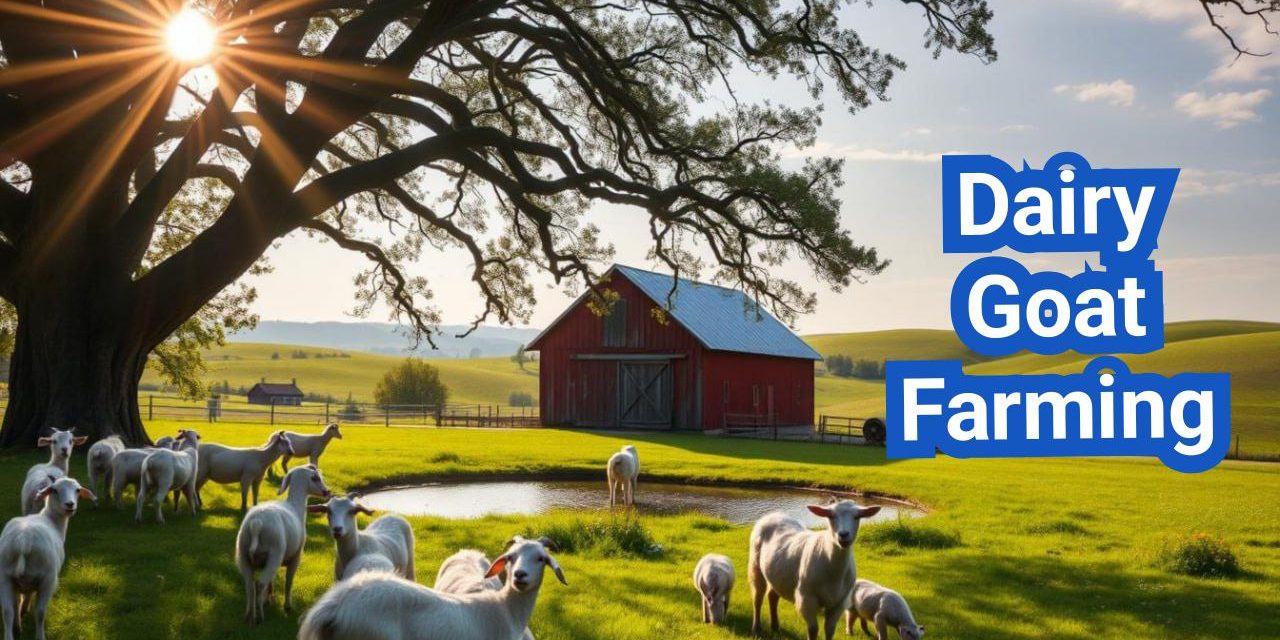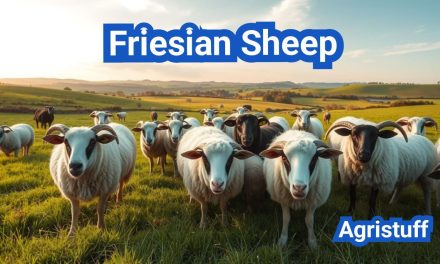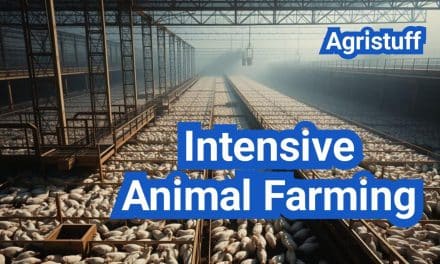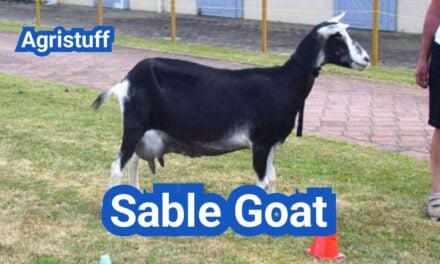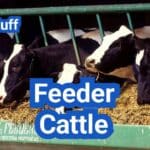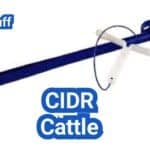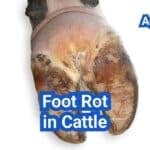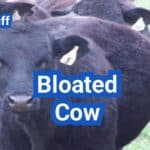Embarking on dairy goat farming can be a rewarding venture for those looking to diversify their agricultural pursuits. This sustainable practice not only provides a source of income through the sale of dairy products but also contributes to a more environmentally friendly farming system.
For beginners, goat farming offers an opportunity to engage in a niche market with relatively low startup costs compared to larger livestock. The key to success lies in understanding the basics of sustainable dairy farming practices and the specific needs of dairy goats.
Key Takeaways
- Understand the basics of dairy goat care and nutrition.
- Learn about sustainable farming practices to minimize environmental impact.
- Explore local markets for dairy products to identify potential sales channels.
- Develop a business plan tailored to dairy goat farming.
- Familiarize yourself with regulations and best practices in your region.
The Fundamentals of Dairy Goat Farming
Embarking on dairy goat farming necessitates a deep dive into its foundational principles. Understanding these basics is crucial for navigating the complexities of this agricultural venture.
Current Market Trends in the United States
The dairy goat farming industry in the United States is experiencing a notable shift towards sustainable and locally sourced products. Consumers are increasingly seeking out artisanal cheeses and other dairy products made from goat milk, driving demand and creating opportunities for new farmers.
According to recent market analyses, the demand for goat dairy products is on the rise, with a growing interest in organic and pasture-raised options. This trend is expected to continue, providing a favorable market environment for dairy goat farmers.
Profitability Potential
The profitability of dairy goat farming can be significant, depending on factors such as the scale of operation, breed selection, and market access. Diversifying products, such as producing cheese, yogurt, or soap, can also enhance profitability.
| Product | Average Price | Potential Revenue |
|---|---|---|
| Goat Milk | $4/gallon | $1,460/year (assuming 365 gallons) |
| Goat Cheese | $10/pound | $3,650/year (assuming 365 pounds) |
| Goat Milk Soap | $8/bar | $2,920/year (assuming 365 bars) |
Time and Resource Commitment
Dairy goat farming requires a substantial time and resource commitment. Farmers must be prepared to dedicate time to daily milking, feeding, and animal care, as well as managing the business aspects of the farm.
Key Considerations:
- Daily milking and animal care routines
- Pasture and feeding management
- Health checks and veterinary care
- Business planning and financial management
By understanding these fundamental aspects, prospective dairy goat farmers can better prepare themselves for the challenges and opportunities that lie ahead.
Benefits of Starting a Goat Dairy

The benefits of starting a goat dairy are multifaceted, ranging from economic advantages to sustainability factors. Dairy goat farming offers a unique blend of financial rewards, environmental stewardship, and personal fulfillment.
Economic Advantages
Dairy goat farming can be a profitable venture, providing a steady income stream through the sale of goat milk and related products. Some of the key economic benefits include:
- High Demand for Goat Milk Products: The demand for goat milk, cheese, and other dairy products is on the rise, driven by consumer preferences for healthier and more sustainable options.
- Diverse Revenue Streams: Goat dairy farmers can diversify their income by selling milk, cheese, yogurt, and value-added products like soap and cosmetics.
- Government Incentives: Many governments offer subsidies and grants to support dairy goat farming, recognizing its potential for economic growth and rural development.
Sustainability Factors
Dairy goat farming is not only economically viable but also environmentally sustainable. Some of the sustainability factors include:
- Land Use Efficiency: Goats can thrive on marginal lands that are not suitable for other agricultural purposes, making efficient use of resources.
- Low Environmental Impact: Compared to larger livestock, goats have a lower environmental footprint, requiring less feed and water while producing fewer greenhouse gas emissions.
- Manure Use: Goat manure is a valuable fertilizer, reducing the need for synthetic fertilizers and promoting soil health.
Lifestyle Considerations
Beyond economic and environmental benefits, dairy goat farming can also offer a desirable lifestyle. Some of the lifestyle considerations include:
- Flexibility: Dairy goat farming can be adapted to various scales, from small hobby farms to larger commercial operations, offering flexibility for farmers.
- Personal Fulfillment: Many farmers find dairy goat farming to be a rewarding and fulfilling career, allowing them to work closely with animals and contribute to their community.
- Community Engagement: Goat dairy farming can foster community engagement through farm tours, workshops, and sales of farm products, promoting local food systems.
Planning Your Dairy Goat Farm
Before starting your dairy goat farming journey, it’s essential to have a solid plan in place. Planning involves several critical components that will guide your decisions and actions as you establish and grow your operation.
Setting Clear Goals and Objectives
Setting clear goals and objectives is the first step in planning your dairy goat farm. This involves determining what you want to achieve with your operation. Are you aiming to produce milk for local consumption, or do you plan to create value-added products like cheese or soap? Perhaps your focus is on breeding high-quality dairy goats for sale.
Having clear goals will help you make informed decisions about your farm’s size, the breed of goats to raise, and the resources you’ll need. It’s also crucial for developing a marketing strategy that aligns with your objectives.
Creating a Comprehensive Dairy Goat Farming Business Plan
A comprehensive business plan is vital for the success of your dairy goat farm. This document should outline your farm’s mission, goals, and strategies for achieving them. It should also include detailed financial projections, marketing plans, and operational procedures.
A business plan serves as a roadmap for your farm, helping you navigate challenges and make adjustments as needed. It’s also a critical tool for securing funding from investors or lenders.
Budgeting for Startup Costs
Budgeting for startup costs is another crucial aspect of planning your dairy goat farm. Startup costs can include purchasing land, building or renovating facilities, buying initial stock of goats, and acquiring necessary equipment.
To create an accurate budget, you’ll need to research the costs associated with each of these elements. Consider consulting with experts, reviewing industry reports, and visiting existing dairy goat farms to gather information.
| Startup Cost Category | Estimated Cost | Notes |
|---|---|---|
| Land Purchase/Rent | $10,000 – $50,000 | Depends on location and size |
| Facilities Construction/Renovation | $5,000 – $20,000 | Includes barns and milking parlor |
| Initial Goat Stock | $3,000 – $10,000 | Depends on breed and quality |
| Equipment and Supplies | $2,000 – $5,000 | Includes milking equipment and feeding systems |
By carefully planning your dairy goat farm, including setting clear goals, creating a comprehensive business plan, and budgeting for startup costs, you’ll be well on your way to establishing a successful and profitable operation.
Legal Requirements for Dairy Goat Farming

The legal framework surrounding dairy goat farming is multifaceted, involving various permits, licenses, and regulations. Understanding these legal requirements is crucial for the successful operation of a dairy goat farm.
Permits and Licenses
To operate a dairy goat farm, you will need to obtain several permits and licenses. These may include a dairy permit, a business license, and potentially other local or state-specific permits. The specific requirements can vary significantly depending on your location, so it’s essential to check with local authorities to determine the exact permits needed.
Key permits and licenses include:
- A dairy permit to sell dairy products
- A business license to operate a farm business
- Environmental permits related to waste management
Zoning Considerations
Zoning laws dictate how land can be used in different areas. For dairy goat farming, it’s crucial to ensure that your farm is zoned for agricultural use. Some areas may have specific requirements or restrictions on farm size, animal numbers, or proximity to residential areas.
“Zoning regulations can significantly impact the viability of a dairy goat farm. It’s essential to understand these regulations before purchasing land or starting operations.”
Dairy Production Regulations
Dairy production regulations are in place to ensure the quality and safety of dairy products. These regulations may cover aspects such as milking practices, milk handling, and storage. Compliance with these regulations is mandatory for selling dairy products, either directly to consumers or to processors.
Regulations may include:
- Milking hygiene standards
- Milk testing requirements
- Record-keeping for milk production and sales
Insurance Needs
Insurance is a critical component of risk management for dairy goat farms. Various types of insurance can protect against different risks, such as animal disease, farm liability, and equipment failure.
Consider the following insurance types:
| Insurance Type | Coverage |
|---|---|
| Animal Mortality Insurance | Covers loss due to death of goats |
| Liability Insurance | Protects against claims of injury or property damage |
| Equipment Insurance | Covers damage or loss of farm equipment |
By understanding and complying with the legal requirements for dairy goat farming, farmers can ensure the sustainability and profitability of their operations.
Selecting the Right Dairy Goat Breeds
Choosing the right dairy goat breed is crucial for the success of your dairy farming venture. Different breeds have unique characteristics that can significantly impact milk production, farm management, and overall profitability.
The most popular dairy goat breeds include Alpine, Nubian, LaMancha, and Saanen goats, each with its own strengths and weaknesses. Understanding these differences is key to making an informed decision that aligns with your farm’s goals and management practices.
Alpine Goats
Alpine goats are known for their high milk production and are often considered a versatile breed. They are hardy and adaptable, making them suitable for various climates and farming systems.
Nubian Goats
Nubian goats are recognized for their rich, creamy milk, which is ideal for producing cheese and butter. They are also known for their distinctive appearance and friendly temperament.
LaMancha Goats
LaMancha goats are prized for their high milk production and unique characteristic of having very short or no ears. They are efficient converters of feed into milk, making them a popular choice among dairy goat farmers.
Saanen Goats
Saanen goats are another highly productive breed, known for their calm temperament and high milk yield. They are often used in crossbreeding programs to improve milk production in other breeds.
When selecting a dairy goat breed, it’s essential to consider factors such as climate adaptability, milk production levels, and temperament to ensure the best fit for your farm’s specific conditions and management practices.
Essential Facilities for Dairy Goat Farming

The foundation of a thriving dairy goat operation lies in its infrastructure, including housing, milking parlors, and storage facilities. A well-designed farm ensures the health and productivity of the goats, ultimately contributing to the success of the dairy farming venture.
Housing Requirements
Proper housing is crucial for protecting dairy goats from extreme weather conditions and predators. The housing structure should be well-ventilated, dry, and spacious enough to accommodate the goats comfortably.
- Provide adequate bedding such as straw or sand to keep the goats clean and dry.
- Ensure the housing area is easy to clean and maintain to prevent disease.
- Incorporate sufficient lighting, as goats need light to maintain their health and productivity.
According to agricultural experts, “The housing for dairy goats should be designed to minimize stress and promote the overall health of the animals” (
Agricultural Research Service
).
Milking Parlor Setup
The milking parlor is a critical component of a dairy goat farm, requiring careful planning and setup to ensure efficient and hygienic milking practices.
| Milking Parlor Feature | Description |
|---|---|
| Milking Station | A raised platform that allows for comfortable milking and reduces strain on the milker’s back. |
| Milking Equipment | Invest in quality milking machines and related equipment to ensure efficient milking and milk quality. |
| Sanitation Facilities | Adequate facilities for cleaning and sanitizing milking equipment are essential for maintaining milk quality. |
Storage Facilities
Adequate storage facilities are necessary for storing feed, hay, and equipment. The storage area should be dry, well-ventilated, and protected from pests.
Key considerations for storage facilities include:
- Feed storage areas should be designed to prevent moisture accumulation and pest infestation.
- Equipment storage should be organized to ensure easy access and maintenance.
Fencing Considerations
Fencing is a critical aspect of dairy goat farming, serving to contain the goats and protect them from predators. The fencing should be sturdy, well-maintained, and appropriate for the size and breed of the goats.
As the dairy goat farming industry continues to evolve, farmers are adopting innovative fencing solutions to enhance security and efficiency. “Fencing that is at least 5 feet high is generally recommended to prevent goats from escaping” (
Agricultural Extension Service
).
Equipment and Supplies Needed

Dairy goat farming requires a range of essential equipment and supplies to ensure the health and productivity of the goats. The right equipment not only improves the efficiency of farm operations but also contributes to the quality of the milk produced.
Milking Equipment
Investing in proper milking equipment is crucial for dairy goat farming. This includes milking machines, milking stands, and milk cooling tanks. Milking machines can significantly reduce the labor involved in milking, while milking stands provide a comfortable and secure environment for both the goats and the farmer.
Key Milking Equipment:
- Milking Machines
- Milking Stands
- Milk Cooling Tanks
- Milking Liners and Teat Dips
Feeding Equipment
Feeding equipment is vital for the nutrition and health of dairy goats. This includes feeders, hay racks, and water troughs. Automated feeding systems can help in managing the nutritional needs of the goats efficiently.
Essential Feeding Equipment:
- Feeders
- Hay Racks
- Water Troughs
- Automated Feeding Systems
Health Management Supplies
Maintaining the health of dairy goats is paramount. Health management supplies include vaccinations, medications, and first aid kits. Regular health checks and preventative care are crucial for avoiding disease outbreaks.
Health Management Essentials:
- Vaccinations
- Medications
- First Aid Kits
- Parasite Control Measures
Record-Keeping Systems
Effective record-keeping is essential for managing a dairy goat farm. This includes records of milk production, breeding, health issues, and financial transactions. Digital record-keeping systems can simplify data management and analysis.
Record-Keeping Tools:
| Record Type | Description | Benefits |
|---|---|---|
| Milk Production Records | Daily milk yield and quality records | Helps in monitoring productivity and detecting health issues early |
| Breeding Records | Records of breeding dates, sire information, and pregnancy status | Aids in planning and managing the breeding program effectively |
| Health Records | Records of vaccinations, medications, and health checks | Essential for maintaining the health and well-being of the goats |
Purchasing Your First Dairy Goats

Purchasing dairy goats requires careful consideration to ensure you’re getting healthy, high-quality animals. This process involves several key steps, from finding a reputable seller to ensuring the goats are transported safely to their new home.
Where to Buy Quality Goats
Finding the right place to buy your dairy goats is crucial. You can consider purchasing from:
- Reputable Breeders: Look for breeders who specialize in dairy goats and have a good reputation.
- Auction Sites: Some auction sites specialize in livestock. However, be cautious and thoroughly inspect the animals before purchasing.
- Local Farms: Visiting local dairy goat farms can provide insights into the health and quality of the goats.
What to Look for in Healthy Animals
When selecting dairy goats, look for signs of good health:
- Bright Eyes and Alertness: Healthy goats are alert and have bright, clear eyes.
- Clean Coat: A clean, well-groomed coat indicates good health.
- Proper Nutrition: Ensure the goats are well-fed and have access to clean water.
Questions to Ask Sellers
When purchasing dairy goats, it’s essential to ask the right questions:
- Health History: Ask about the health history of the goats, including vaccinations and any past illnesses.
- Breeding Information: For breeding purposes, ask about the goat’s lineage and breeding history.
- Milking History: If you’re purchasing goats for milking, inquire about their milking history and production levels.
Transportation Considerations
Transporting dairy goats requires careful planning:
- Suitable Vehicle: Ensure you have a suitable vehicle for transporting the goats, with adequate ventilation and safety measures.
- Minimize Stress: Keep the goats calm during transport by minimizing noise and ensuring they are comfortable.
- Post-Transport Care: Upon arrival, provide the goats with water and food, and monitor their health.
Nutrition and Feeding Management

Proper nutrition is the backbone of a successful dairy goat operation, influencing both milk production and overall health. Dairy goats have specific nutritional requirements that must be met to ensure they produce high-quality milk and maintain optimal health.
Basic Nutritional Requirements
Dairy goats require a balanced diet that includes adequate amounts of energy, protein, vitamins, and minerals. The basic nutritional requirements vary depending on factors such as age, breed, and stage of lactation. For instance, lactating goats have higher energy and protein needs compared to dry goats.
A typical dairy goat diet consists of a mix of hay, grains, and concentrates. High-quality hay, such as alfalfa or legume hay, is rich in protein and calcium, making it an excellent choice for dairy goats. Grains like corn, oats, and barley provide energy, while concentrates are used to balance the diet and ensure that the goats receive all necessary nutrients.
Formulating a Balanced Diet
Formulating a balanced diet for dairy goats involves considering their nutritional needs and selecting feed ingredients that meet those needs. It’s essential to work with a qualified nutritionist or veterinarian to develop a feeding program that is tailored to the specific needs of your dairy goat operation.
A balanced diet for dairy goats should include a mix of forages and concentrates. Forages, such as hay and pasture, provide fiber and help maintain rumen health, while concentrates provide energy and protein. The ratio of forages to concentrates will vary depending on the stage of lactation and the individual needs of the goats.
Pasture Management
Pasture management is a critical aspect of dairy goat nutrition. Well-managed pastures can provide high-quality forage and help reduce feed costs. Rotational grazing is a common practice that involves moving the goats to different pastures to prevent overgrazing and maintain pasture health.
Effective pasture management also involves monitoring pasture quality and quantity, controlling weeds and parasites, and ensuring that the goats have access to clean water and adequate shelter.
Water Requirements
Adequate water intake is essential for dairy goats, as it affects their overall health and milk production. Goats need access to clean, fresh water at all times, and water intake should be monitored regularly to ensure that they are drinking enough.
The water requirements of dairy goats vary depending on factors such as temperature, humidity, and stage of lactation. Generally, lactating goats require more water than dry goats, and water intake may need to be adjusted during periods of high temperatures or dry conditions.
Health Management in Dairy Goat Farming

Effective health management is crucial for the success of dairy goat farming. A well-planned health strategy ensures the overall well-being of the goats, leading to improved milk production and farm profitability.
Preventative Care Practices
Preventative care is a cornerstone of dairy goat health management. This includes regular vaccinations, parasite control measures, and hoof care. Implementing these practices helps prevent diseases and reduces the need for costly treatments.
- Regular vaccinations against common diseases
- Parasite control through deworming and pasture management
- Hoof trimming to prevent lameness
Common Health Issues
Dairy goats are susceptible to various health issues, including mastitis, parasites, and reproductive problems. Understanding these common issues is key to maintaining a healthy herd.
- Mastitis: a bacterial infection causing inflammation of the udder
- Internal parasites: worms and other parasites that can affect goat health
- Reproductive issues: problems related to breeding and kidding
Finding a Livestock Veterinarian
Establishing a relationship with a knowledgeable livestock veterinarian is vital for dairy goat farmers. They provide essential guidance on health management, diagnose health issues, and perform necessary treatments.
Key considerations when selecting a veterinarian include:
- Experience with dairy goats
- Availability for emergency consultations
- Knowledge of local health issues and regulations
Vaccination Schedules
Developing a vaccination schedule is a critical aspect of preventative care. The schedule should be tailored to the specific needs of the herd, taking into account factors such as disease prevalence and farm history.
By prioritizing health management, dairy goat farmers can improve the health and productivity of their herd, ultimately contributing to the success of their farming operation.
Breeding and Kidding Practices

Breeding and kidding are crucial aspects of dairy goat farming that require careful planning and management. Effective breeding practices not only ensure the health and productivity of the herd but also play a significant role in determining the quality and quantity of milk produced.
Timing and Methods
The timing of breeding is critical and depends on several factors, including the breed of the goat, the desired kidding season, and the farm’s overall management strategy. Most dairy goat breeds are seasonal breeders, meaning they are ready to be bred during certain times of the year. Artificial insemination (AI) is a common practice in dairy goat farming, offering several advantages, including the ability to introduce superior genetics from male goats not available on the farm.
Some key considerations for breeding timing and methods include:
- Understanding the estrous cycle of goats and identifying the optimal breeding window.
- Selecting a breeding method that aligns with the farm’s resources and goals, such as natural breeding or AI.
- Ensuring that does are in optimal health and condition before breeding.
Pregnancy Care
Proper care during pregnancy is vital for the health of both the doe and the developing kids. This includes providing a balanced diet rich in necessary nutrients, maintaining a clean and safe living environment, and monitoring the doe’s health closely. Regular veterinary check-ups can help identify any potential issues early on.
Key aspects of pregnancy care include:
- Nutritional management to support fetal development.
- Health checks to monitor the doe’s condition and detect any complications.
- Preparation of a safe kidding area to reduce the risk of disease and stress.
The Kidding Process
The kidding process is a critical moment in dairy goat farming. Farmers should be prepared to assist if necessary and ensure that both the doe and kids receive appropriate care immediately after kidding. This includes providing colostrum to the kids to boost their immune system.
Newborn Kid Management
Effective management of newborn kids is essential for their survival and future productivity. This involves ensuring they receive adequate nutrition, monitoring their health, and implementing appropriate identification and record-keeping practices.
Some best practices for newborn kid management include:
- Ensuring kids receive colostrum within the first hour of birth.
- Monitoring kid health and addressing any issues promptly.
- Implementing a kid-rearing program that supports their growth and development.
Milking Procedures and Best Practices

Milking is a critical aspect of dairy goat farming that demands attention to detail and best practices. The quality of milk produced on a dairy goat farm is directly related to the milking procedures employed by the farmer.
Hand vs. Machine Milking
The decision between hand milking and machine milking depends on several factors, including the size of the operation, available resources, and personal preference. Hand milking allows for a more personal interaction with the animals and can be less expensive to initiate. However, it can be time-consuming and labor-intensive. Machine milking, on the other hand, is more efficient and can reduce labor costs, but it requires a significant initial investment in equipment.
Key Considerations for Hand Milking:
- Requires skill and technique to avoid causing discomfort to the goat
- Can be time-consuming, especially for larger herds
- Less expensive initial setup compared to machine milking
Key Considerations for Machine Milking:
- More efficient and can handle larger volumes
- Requires significant initial investment in milking machines
- Needs regular maintenance to ensure equipment longevity
Establishing a Milking Routine
A consistent milking routine is essential for maintaining milk quality and ensuring the health and comfort of the dairy goats. This routine should include regular milking times, proper udder preparation, and gentle handling of the animals.
Steps to Establish a Milking Routine:
- Set a regular milking schedule
- Prepare the udder by cleaning and stimulating the teat
- Perform the milking efficiently and gently
- Post-milking care includes teat dipping and udder cleaning
Milk Handling and Storage
Proper handling and storage of milk are crucial to maintaining its quality. Milk should be cooled promptly after milking and stored in clean, sanitized containers.
Best Practices for Milk Handling and Storage:
- Cool milk to below 40°F (4°C) within one hour of milking
- Store milk in sanitized containers to prevent contamination
- Keep storage areas clean and free from strong-smelling foods
Maintaining Milk Quality
Maintaining milk quality involves a combination of good milking practices, proper equipment maintenance, and regular testing for bacterial content and somatic cell count.
By adhering to these best practices and maintaining a focus on milk quality, dairy goat farmers can produce high-quality milk that meets consumer demands and regulatory standards.
Processing and Marketing Goat Milk Products
Dairy goat farmers can diversify their income streams by processing goat milk into a range of value-added products. This not only enhances profitability but also helps in catering to a wider market demand.
Milk Processing Options
There are several ways to process goat milk, each offering different benefits and challenges. The primary methods include pasteurization, homogenization, and ultra-high temperature (UHT) processing. Pasteurization is a critical step that involves heating the milk to kill harmful bacteria while preserving its nutritional value.
The choice of processing method depends on the intended end product, equipment availability, and market requirements. For instance, UHT processing is ideal for products that require a longer shelf life without refrigeration.
Cheese and Yogurt Production
Cheese and yogurt are among the most popular products made from goat milk. The production process involves fermenting the milk with specific bacterial cultures. Goat milk cheese is renowned for its unique flavor and is often considered easier to digest than cow milk cheese.
Yogurt production, on the other hand, involves fermenting the milk with live cultures, resulting in a product that is rich in probiotics. Both cheese and yogurt can be marketed as health-conscious alternatives to traditional dairy products.
Soap and Cosmetic Products
Goat milk is also used in the production of soap and various cosmetic products due to its moisturizing and nourishing properties. Goat milk soap is known for its gentle cleansing abilities and is often recommended for sensitive skin.
Cosmetic products, such as lotions and creams, benefit from the natural nutrients present in goat milk, making them popular in the skincare industry.
Marketing Strategies
Effective marketing is crucial for the success of goat milk products. Strategies include highlighting the health benefits, unique taste, and nutritional advantages of goat milk derivatives. Social media marketing and participation in local farmers’ markets can also help in reaching a wider audience.
Building a brand around the quality and uniqueness of the products can further enhance marketability. Collaborating with local businesses and restaurants to offer goat milk products can also be a viable marketing strategy.
| Product | Key Benefits | Target Market |
|---|---|---|
| Goat Milk Cheese | Unique flavor, easier to digest | Health-conscious consumers, gourmet food enthusiasts |
| Goat Milk Yogurt | Rich in probiotics, nutritious | Health-oriented individuals, fitness enthusiasts |
| Goat Milk Soap | Moisturizing, gentle on skin | Individuals with sensitive skin, eco-conscious consumers |
Common Challenges in Dairy Goat Farming
Dairy goat farming, like any agricultural venture, comes with its set of challenges that farmers must navigate to ensure success. Understanding these challenges is crucial for developing effective strategies to mitigate them.
Seasonal Production Fluctuations
One of the significant challenges faced by dairy goat farmers is managing seasonal production fluctuations. The milk production of dairy goats can vary significantly throughout the year, influenced by factors such as breeding cycles, nutrition, and climate conditions.
- Breeding Cycles: Dairy goats typically have a seasonal breeding pattern, which can lead to fluctuations in milk production.
- Nutritional Factors: The quality and quantity of feed can significantly impact milk production levels.
- Climate Conditions: Extreme weather conditions can stress the animals, affecting their productivity.
Managing these fluctuations requires careful planning, including adjusting feeding strategies and breeding programs to maintain a consistent milk supply.
Predator Management
Predator management is another critical challenge for dairy goat farmers. Various predators, including coyotes, foxes, and wild dogs, can threaten the safety of the goats.
Effective predator management strategies include:
- Using robust fencing to secure the farm.
- Implementing guard animal programs, such as using dogs or donkeys to protect the goats.
- Employing technology, like surveillance cameras and motion-sensitive lighting, to deter predators.
Disease Outbreaks
Disease outbreaks can have a devastating impact on dairy goat farms, leading to reduced productivity and increased veterinary costs. Common diseases include parasites, mastitis, and respiratory infections.
Preventative measures are key to managing disease outbreaks, including:
- Vaccination Programs: Regular vaccination can help prevent certain diseases.
- Parasite Control: Regular monitoring and treatment for internal and external parasites.
- Sanitation and Hygiene: Maintaining clean living conditions for the goats.
Market Access Issues
Dairy goat farmers often face challenges in accessing markets for their products. This can be due to various factors, including competition, regulatory requirements, and distribution networks.
To overcome these challenges, farmers can:
- Diversify Products: Producing a range of dairy products can help reach different market segments.
- Develop Marketing Strategies: Building a brand and engaging in direct marketing can help farmers connect with consumers.
- Explore Local Markets: Focusing on local markets can reduce distribution challenges and increase profitability.
Financial Management for Dairy Goat Farmers
Dairy goat farmers must prioritize financial management to ensure the profitability and sustainability of their farms. Effective financial management involves several key components that help farmers make informed decisions and maintain a healthy financial status.
Record Keeping Systems
Implementing a robust record-keeping system is essential for dairy goat farmers. This involves maintaining detailed records of income, expenses, inventory, and production levels. Accurate record keeping enables farmers to track their financial performance, identify areas for improvement, and make data-driven decisions. Farmers can use software or manual systems to keep track of their records, ensuring that all financial data is up-to-date and easily accessible.
Tracking Income and Expenses
Tracking income and expenses is a critical aspect of financial management for dairy goat farmers. Farmers should regularly monitor their cash flow to ensure that they have sufficient funds to cover operational costs. This includes tracking sales revenue, government subsidies, and other sources of income, as well as expenses such as feed, veterinary care, and equipment maintenance. By maintaining a clear picture of their financial situation, farmers can identify opportunities to reduce costs and increase profitability.
Scaling Your Operation
As dairy goat farms grow and expand, scaling the operation becomes a key consideration. Farmers should develop strategies to manage increased production and sales while maintaining financial stability. This may involve investing in new equipment, hiring additional staff, or exploring new markets. Careful planning and financial analysis are essential to ensure that the farm remains profitable as it scales.
Tax Considerations for Agricultural Businesses
Dairy goat farmers must also consider the tax implications of their business operations. Agricultural businesses are subject to specific tax regulations, including deductions for farm-related expenses and potential tax credits. Farmers should consult with a tax professional to ensure that they are taking advantage of all available tax savings opportunities. By understanding and navigating the tax landscape, farmers can minimize their tax liability and maximize their after-tax income.
In conclusion, effective financial management is vital for the success of dairy goat farming operations. By implementing robust record-keeping systems, tracking income and expenses, scaling operations carefully, and navigating tax considerations, farmers can ensure the long-term sustainability and profitability of their farms.
At the End Of : Dairy Goat Farming
Dairy goat farming is a rewarding venture that requires careful planning, management, and dedication. By understanding the fundamentals, benefits, and challenges of dairy goat farming, beginners can set themselves up for success.
A well-planned dairy goat farm involves selecting the right breeds, creating essential facilities, and implementing effective nutrition and health management practices. Additionally, understanding legal requirements, milking procedures, and marketing strategies is crucial for a profitable operation.
This guide has provided a comprehensive summary of dairy goat farming tips, covering key aspects from startup to management. By following these guidelines, new farmers can navigate the complexities of dairy goat farming and establish a thriving business.
In conclusion, dairy goat farming offers a unique opportunity for agricultural entrepreneurs. With the right knowledge and practices, dairy goat farmers can produce high-quality milk and dairy products, contributing to a sustainable and profitable business.
FAQ
What are the benefits of starting a dairy goat farm?
Starting a dairy goat farm can provide economic advantages, sustainability factors, and lifestyle considerations, making it a rewarding venture for those interested in agriculture and animal husbandry.
How do I choose the right dairy goat breed for my farm?
Selecting the right dairy goat breed depends on factors such as climate, milk production needs, and personal preference. Popular breeds include Alpine, Nubian, LaMancha, and Saanen goats, each with unique characteristics and advantages.
What are the essential facilities required for dairy goat farming?
Essential facilities for dairy goat farming include housing requirements, milking parlor setup, storage facilities, and fencing considerations. Proper facilities ensure the health and well-being of the goats and efficient farm operations.
How do I manage the nutrition and feeding of my dairy goats?
Effective nutrition and feeding management involve understanding the basic nutritional requirements of dairy goats, formulating a balanced diet, managing pasture, and ensuring adequate water supply. Proper feeding practices are crucial for maintaining the health and productivity of the goats.
What are the common health issues in dairy goats, and how can I prevent them?
Common health issues in dairy goats include parasites, mastitis, and reproductive problems. Preventative care practices, regular veterinary check-ups, and vaccination schedules can help mitigate these issues and maintain the overall health of the herd.
How do I process and market goat milk products?
Processing goat milk into various products such as cheese, yogurt, soap, and cosmetics can add value to your dairy goat farm. Developing effective marketing strategies is crucial for reaching customers and establishing a successful business.
What are the financial management considerations for dairy goat farmers?
Financial management for dairy goat farmers involves maintaining accurate record-keeping systems, tracking income and expenses, scaling the operation as needed, and understanding tax considerations relevant to agricultural businesses.
What are the legal requirements for starting a dairy goat farm?
Legal requirements for dairy goat farming include obtaining necessary permits and licenses, complying with zoning regulations, adhering to dairy production regulations, and securing appropriate insurance coverage.
How do I establish a milking routine and maintain milk quality?
Establishing a consistent milking routine, whether by hand or machine, and following proper milk handling and storage practices are essential for maintaining milk quality and ensuring the production of high-quality dairy products.
What are the challenges faced by dairy goat farmers, and how can they be addressed?
Dairy goat farmers may face challenges such as seasonal production fluctuations, predator management, disease outbreaks, and market access issues. Understanding these challenges and implementing strategies to mitigate them can help ensure the success and sustainability of the farm.
Dairy Goat Farming: Overview
Dairy goat farming is a rewarding and profitable agricultural venture, especially in the USA, where demand for goat milk and its byproducts continues to rise. Whether you’re a homesteader looking for a sustainable milk source or a commercial farmer aiming to tap into niche markets, this guide covers everything you need to know about dairy goat farming—from breed selection and housing to feeding, health management, and marketing strategies.
Understanding Dairy Goat Farming
Dairy goat farming focuses on raising goats specifically for milk production. Unlike meat goats, dairy breeds like Nubian, Saanen, and Alpine are prized for their high milk yield and butterfat content. According to the USDA National Agricultural Statistics Service, goat milk production has steadily increased due to its digestibility and nutritional benefits, making dairy goat farming a viable business opportunity 1.
Benefits of Starting a Dairy Goat Farm
Dairy goat farming offers several advantages over traditional dairy cattle farming:
- Lower Space Requirements – Goats need less grazing land than cows.
- High Milk Yield – Some breeds produce up to a gallon of milk per day.
- Sustainable & Eco-Friendly – Goats efficiently convert forage into milk, reducing feed costs.
- Diverse Product Opportunities – Milk can be processed into cheese, yogurt, and soap.
The American Dairy Goat Association highlights that dairy goats also improve land by controlling weeds and brush, making them ideal for small-scale and sustainable farming 1.
Best Dairy Goat Breeds for Farming
Choosing the right breed is crucial for a successful dairy goat farm. The top dairy goat breeds in the USA include:
- Nubian – Known for high butterfat content (4-5%) and rich, creamy milk.
- Saanen – The highest milk producer (up to 3+ gallons per day).
- Alpine – Adaptable to various climates with consistent milk output.
- LaMancha – Recognizable for their short ears and mild-flavored milk.
For a detailed comparison of dairy goat breeds, visit the Oklahoma State University Extension 2.
Setting Up Your Dairy Goat Farm
Proper infrastructure ensures healthy and productive goats. Key considerations include:
- Shelter – A well-ventilated barn protects goats from extreme weather.
- Fencing – Sturdy fencing prevents escapes (goats are notorious climbers).
- Milking Parlor – A clean, organized space for hygienic milk collection.
The Penn State Extension provides excellent guidelines on designing efficient goat housing and milking setups 1.
Feeding and Nutrition for Dairy Goats
A balanced diet maximizes milk production. Dairy goats require:
- High-Quality Hay – Alfalfa or grass hay provides essential fiber.
- Grains & Supplements – Dairy ration pellets support lactation.
- Fresh Water – Goats drink 1-2 gallons daily, especially when milking.
The University of Arkansas Division of Agriculture offers in-depth resources on formulating cost-effective goat feed rations 2.
Health Management and Disease Prevention
Healthy goats produce more milk. Common health issues include:
- Parasites – Regular deworming prevents infestations.
- Mastitis – A bacterial infection affecting milk quality; proper udder care is essential.
- Hoof Rot – Routine trimming prevents lameness.
The Maryland Small Ruminant Page is a trusted resource for goat health protocols 1.
Milking and Milk Handling
Proper milking techniques ensure hygiene and quality:
- Milking Schedule – Milk twice daily at consistent times.
- Sanitation – Clean udders and sterilize equipment to prevent contamination.
- Storage – Chill milk immediately to maintain freshness.
For best practices in milk handling, refer to the FDA’s Guidelines on Raw Milk 3.
Breeding and Reproduction in Dairy Goats
Efficient breeding ensures a steady milk supply:
- Buck-to-Doe Ratio – 1 mature buck can service 25-50 does per season.
- Heat Cycles – Does cycle every 18-21 days; breeding in fall leads to spring kidding.
- Genetic Selection – Choose bucks with high milk production lineage.
The Langston University Goat Research Center provides expert advice on goat reproduction 1.
Marketing and Selling Dairy Goat Products
A strong marketing strategy boosts profitability:
- Direct Sales – Farmers’ markets, CSAs, and online stores.
- Value-Added Products – Cheese, yogurt, and soap attract premium prices.
- Social Media – Platforms like Instagram and Facebook help reach health-conscious consumers.
The USDA Agricultural Marketing Service offers insights into dairy market trends 1.
Challenges in Dairy Goat Farming
Common challenges include:
- Predators – Guard dogs and secure fencing protect herds.
- High Feed Costs – Pasture rotation and homegrown forage reduce expenses.
- Regulatory Compliance – Licensing is required for selling milk products.
The National Sustainable Agriculture Information Service provides solutions for sustainable farming hurdles 1.
Sustainable Practices in Dairy Goat Farming
Eco-friendly methods enhance long-term success:
- Rotational Grazing – Improves pasture health and reduces feed costs.
- Manure Management – Goat manure is an excellent organic fertilizer.
- Renewable Energy – Solar-powered milking systems cut energy costs.
The Sustainable Agriculture Research & Education Program shares tips on eco-conscious livestock farming 1.
Final Thought
Dairy goat farming is a profitable and sustainable venture with growing demand in the USA. By selecting high-yielding breeds, maintaining proper nutrition, ensuring good health, and implementing effective marketing, farmers can build a thriving dairy goat business. Whether you’re starting small or scaling up, this guide provides the foundation for success in dairy goat farming.
Conclusion Of: Dairy Goat Farming
Dairy goat farming is growing steadily in popularity across the United States as both small-scale farmers and commercial producers recognize its potential. Goat milk is in high demand for its nutritional benefits, versatility in products like cheese and yogurt, and appeal to consumers seeking alternatives to cow’s milk. This guide explains all the essential steps in dairy goat farming, from selecting breeds to milking practices and herd management.
What Is Dairy Goat Farming?
Dairy goat farming involves raising goats specifically for milk production. Farmers sell goat milk directly, process it into products like cheese and soap, or supply it to larger dairy cooperatives.
Why Dairy Goat Farming Is Gaining Popularity
Benefits of dairy goat farming include:
- Lower startup costs compared to dairy cows
- Smaller space requirements
- High milk yield relative to body size
- Goat milk’s growing popularity for lactose-intolerant consumers
Choosing the Best Dairy Goat Breeds
Top breeds for dairy goat farming include:
- Saanen: High milk yield, calm temperament
- Nubian: High butterfat content in milk
- Alpine: Good overall production and adaptability
- Toggenburg: Consistent milkers with average butterfat
- LaMancha: Unique ear shape, good milk volume and flavor
Breed selection affects productivity, feed efficiency, and market positioning.
Setting Up Your Dairy Goat Farm
Key components of a dairy goat farming setup:
- Proper fencing to prevent escapes
- Clean, dry shelters with good ventilation
- Milking parlor setup for hygiene and efficiency
- Feed storage and supply systems
- Space for kids (baby goats) and does (female goats)
Housing and Shelter Requirements
Good shelter in dairy goat farming ensures:
- Protection from rain and extreme heat or cold
- Clean, dry bedding
- Easy access for milking and feeding
- Separate areas for sick or lactating goats
Feeding and Nutrition for Dairy Goats
Dairy goat farming success relies on precise nutrition:
- Quality pasture and browse as the base diet
- Hay supplementation (alfalfa preferred)
- Grain mixes tailored to lactating goats
- Free-choice minerals and salt blocks
- Plenty of clean, fresh water
Milking Process and Equipment
Key aspects of milking in dairy goat farming:
- Milking twice daily for optimal yield
- Maintaining strict hygiene to prevent contamination
- Using milking machines or hand-milking methods
- Storing milk in sanitized, refrigerated containers
Goat Milk Products and Market Potential
Products from dairy goat farming include:
- Fresh goat milk
- Goat cheese (chèvre, feta, hard cheeses)
- Goat yogurt and kefir
- Goat milk soap and skincare products
Health and Veterinary Care
Health management is crucial in dairy goat farming:
- Regular vaccinations and parasite control
- Monitoring for mastitis in milking goats
- Hoof trimming every 4–6 weeks
- Routine check-ups and veterinary consultations
Breeding Management in Dairy Goat Farming
Reproductive management includes:
- Controlled breeding schedules
- Selecting bucks (male goats) for dairy traits
- Monitoring does for heat cycles
- Proper care during pregnancy and kidding (birthing)
Kid Management and Rearing
Raising kids successfully is part of dairy goat farming:
- Bottle-feeding or dam-rearing approaches
- Colostrum intake in the first 24 hours
- Disbudding (horn removal) and vaccinations
- Weaning schedules and growth monitoring
Sustainability and Dairy Goat Farming
Dairy goats are eco-friendly compared to larger livestock:
- Lower water and feed input needs
- Effective in brush management and pasture improvement
- Smaller carbon footprint than cattle dairies
Economic Factors in Dairy Goat Farming
Key financial considerations:
- Initial setup and animal purchase costs
- Feed and veterinary expenses
- Labor requirements (milking twice daily)
- Market demand and pricing for goat milk products
Pros of Dairy Goat Farming
- Flexible farm size (small or large-scale)
- Strong niche market for goat milk products
- Lower cost barrier to entry than cow dairies
- Less environmental impact
Cons of Dairy Goat Farming
- Requires twice-daily milking commitment
- Smaller individual milk yields than dairy cows
- Susceptibility to specific diseases like mastitis
- Marketing challenges in regions without established goat milk markets
Finally
Dairy goat farming offers a sustainable and profitable path for farmers looking to diversify their operations or focus solely on goat milk products. By carefully choosing breeds, managing nutrition and health, and setting up efficient milking systems, U.S. farmers can tap into a growing market. Whether you aim for small-batch artisanal cheese or commercial dairy supply, dairy goat farming provides flexible opportunities with real growth potential.

